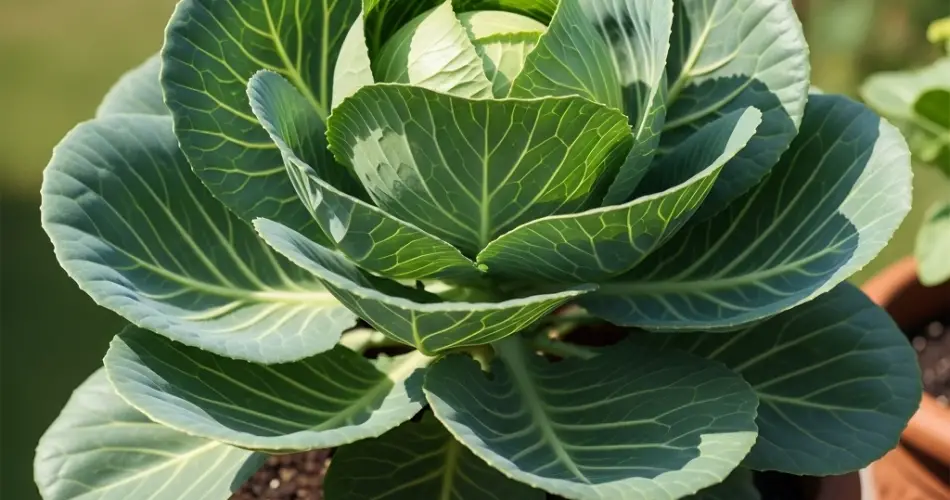Cabbage is a cool-season crop that grows surprisingly well in containers, making it a great choice for gardeners with limited space. Whether you have a small balcony, patio, or rooftop garden, you can enjoy fresh, crisp cabbage heads with a bit of planning and care. With proper soil, sunlight, and watering, container-grown cabbage can thrive and provide a satisfying harvest.
Why Grow Cabbage in Containers?
Container gardening gives you full control over the growing environment. It minimizes exposure to soil-borne diseases, reduces weed growth, and allows you to move your plants to catch the best sunlight. For urban gardeners or anyone without garden beds, containers provide an efficient way to grow heavy-feeding vegetables like cabbage in a manageable setup.
Choosing the Right Container
Cabbage plants need space for their roots to expand and for the head to develop properly. Choose a container that’s at least 12–14 inches deep and 12–16 inches wide. If you’re planting multiple cabbages in one container, allow about 12 inches of space between each plant. Use containers made of plastic, terracotta, or fabric grow bags—whatever suits your growing area—as long as they have good drainage.
Make sure the pot has several holes at the bottom to allow excess water to escape. Waterlogged soil can cause root rot and stunted growth.
Soil Preparation and Fertilizer
Cabbage prefers rich, well-draining soil full of organic matter. Use a high-quality potting mix combined with compost or aged manure. A good soil blend includes:
-
2 parts potting mix
-
1 part compost or worm castings
-
1 part perlite or coconut coir for drainage and moisture retention
Before planting, mix in a slow-release organic fertilizer high in nitrogen to support leafy growth. Once the heads begin forming, switch to a balanced fertilizer (such as 10-10-10) every two weeks to support head development.
Best Cabbage Varieties for Pots
Choose compact or early-maturing cabbage varieties for container success. Here are a few excellent choices:
-
Golden Acre – Early maturing and small-sized, ideal for containers.
-
Pixie – A miniature cabbage that matures quickly.
-
Copenhagen Market – Produces firm, round heads in tight spaces.
-
Red Acre – A colorful red cabbage with compact growth.
These varieties have shallow root systems and shorter growing times, making them ideal for small spaces.
Planting Cabbage in Containers
You can start cabbage from seeds or seedlings. For faster results, buy healthy nursery seedlings with strong stems and a few leaves. If starting from seed, sow them indoors 6–8 weeks before the last frost and transplant them when the seedlings have 4–5 true leaves.
Plant one cabbage seedling per container, or space them 12 inches apart if using a large rectangular pot. Press the soil firmly around the base and water thoroughly.
Sunlight and Temperature
Cabbage is a cool-weather crop that grows best in temperatures between 60–70°F (15–21°C). It needs 6–8 hours of direct sunlight per day. In warm climates, grow cabbage in early spring or fall to avoid heat stress and bolting.
If temperatures rise too high, move the containers to a partially shaded area in the afternoon or use shade cloth to reduce heat.
Watering and Maintenance
Cabbage needs consistently moist soil but not soggy conditions. Water when the top inch of soil feels dry to the touch. Deep, regular watering encourages strong root development and dense heads. Mulch the top of the soil with straw or shredded leaves to retain moisture and suppress weeds.
Keep an eye out for common pests like aphids, cabbage loopers, and caterpillars. You can control them by handpicking or spraying with neem oil or an organic insecticidal soap. Regularly inspect the undersides of leaves, where pests tend to hide.
Supporting Healthy Growth
As the cabbage grows, the outer leaves will spread and the head will begin to form in the center. To encourage head formation, avoid disturbing the plant or moving the container too often. You can also use a support ring to help hold the head upright, especially if it becomes top-heavy.
Feeding your cabbage with a liquid fish emulsion or seaweed extract every couple of weeks can help provide extra nutrients during the growing phase.
When and How to Harvest
Cabbage is ready to harvest when the head feels firm and reaches the expected size for its variety. Most varieties mature in 60–90 days. To harvest, cut the stem just above the soil level using a sharp knife.
After harvesting the main head, you can leave the base and outer leaves in place. Smaller side heads may grow and offer a secondary harvest.
Final Thoughts
Growing cabbage in containers is not only possible—it’s practical and rewarding. With the right container size, soil mix, and consistent care, you can enjoy fresh, homegrown cabbage even in small urban spaces. From planting to harvesting, the process is straightforward and ideal for beginner and experienced gardeners alike. Whether you’re preparing slaw, stir-fry, or soups, nothing beats the taste of cabbage picked straight from your patio garden.



